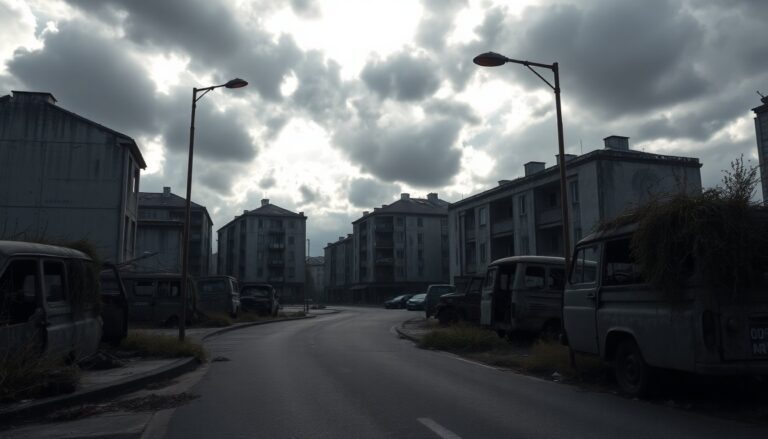Argomenti trattati
In 1971, Stanley Kubrick released A Clockwork Orange, a film that sparked significant discussion due to its unsettling portrayal of violence and striking visual style. Based on Anthony Burgess’s novel, the film follows Alex DeLarge, portrayed by Malcolm McDowell, a rebellious youth leading a gang in a grim, futuristic England marked by chaos and crime. The film raises profound questions about free will, social control, and the darker aspects of humanity.
While the narrative presents a dystopian vision, much of the filming occurred in real locations, primarily around London. The director meticulously selected sites that embodied the film’s themes and created an unsettling atmosphere resonant with audiences. This choice highlights how Kubrick captured a dystopian reality lurking within contemporary society.
The evidence
One of the most notable settings is the stark residential complex of Thamesmead South, located in southeast London. This area, characterized by its brutalist architecture, serves as the backdrop for Alex’s home. The cold, concrete structures and desolate surroundings amplify the film’s sense of alienation and decay. External shots were filmed at the now-demolished Tavy Bridge Centre, which has since been erased from the urban landscape, leaving behind only memories of its contribution to the film’s unsettling ambiance.
The significance of modernist architecture
The Brunel University Campus features prominently in the film, particularly as the location of the infamous Ludovico Institute where Alex undergoes controversial rehabilitation. The imposing Lecture Centre stands out with its stark concrete design, perfectly mirroring the dehumanizing themes explored throughout the narrative. This choice of location illustrates how architecture can reflect and enhance thematic elements within film.
Iconic moments captured in real locations
Another memorable scene unfolds at Southmere Lake, where Alex asserts dominance over his gang member Dim by throwing him into the water. This artificial lake, surrounded by towering buildings, remains a poignant symbol of the film’s tension and conflict. The scene illustrates the exploration of power dynamics and the brutal reality of Alex’s world.
Additionally, the eerie underpass where the gang assaults a homeless man is located beneath a busy intersection at Trinity Road and Swandon Way in Wandsworth. This particular tunnel, still desolate today, evokes the same feelings of dread and violence that permeate the film. The choice of such a location serves to ground the film’s surreal elements in a tangible reality.
Transformations of cinematic spaces
Inside the fictional Municipal Flat Block 18A, where Alex resides with his parents, filming took place in the upper levels of Canterbury House in Borehamwood. Kubrick’s attention to detail was so intense that he spent thousands on set design and relocated actual residents to achieve the perfect shot. This commitment to realism highlights the lengths filmmakers will go to immerse audiences in their vision.
Other locations, such as the once-trendy Chelsea Drugstore, where Alex meets two girls, have undergone drastic changes. This establishment, once a cultural hub, is now a McDonald’s, showcasing how urban spaces evolve over time. This shift highlights the contrast between the vibrant spirit of the 1960s London depicted in the film and the modern consumer culture observed today.
Legacy of a cinematic exploration
The haunting abandoned theater on Taggs Island, where gang conflicts ensue, reflects the decay of once-grand spaces. It was a remnant of the luxurious Karsino Hotel, which has long since been demolished, emphasizing the transient nature of such locations in cinema and reality.
In a striking scene, the modernist home where the iconic “Singin’ in the Rain” moment occurs is known as Skybreak, a design marvel by architects Norman Foster and Richard Rogers. The film’s blend of classical music and violent imagery within this pristine setting creates a dissonance that lingers in the viewer’s mind.
While the narrative presents a dystopian vision, much of the filming occurred in real locations, primarily around London. The director meticulously selected sites that embodied the film’s themes and created an unsettling atmosphere resonant with audiences. This choice highlights how Kubrick captured a dystopian reality lurking within contemporary society.0

